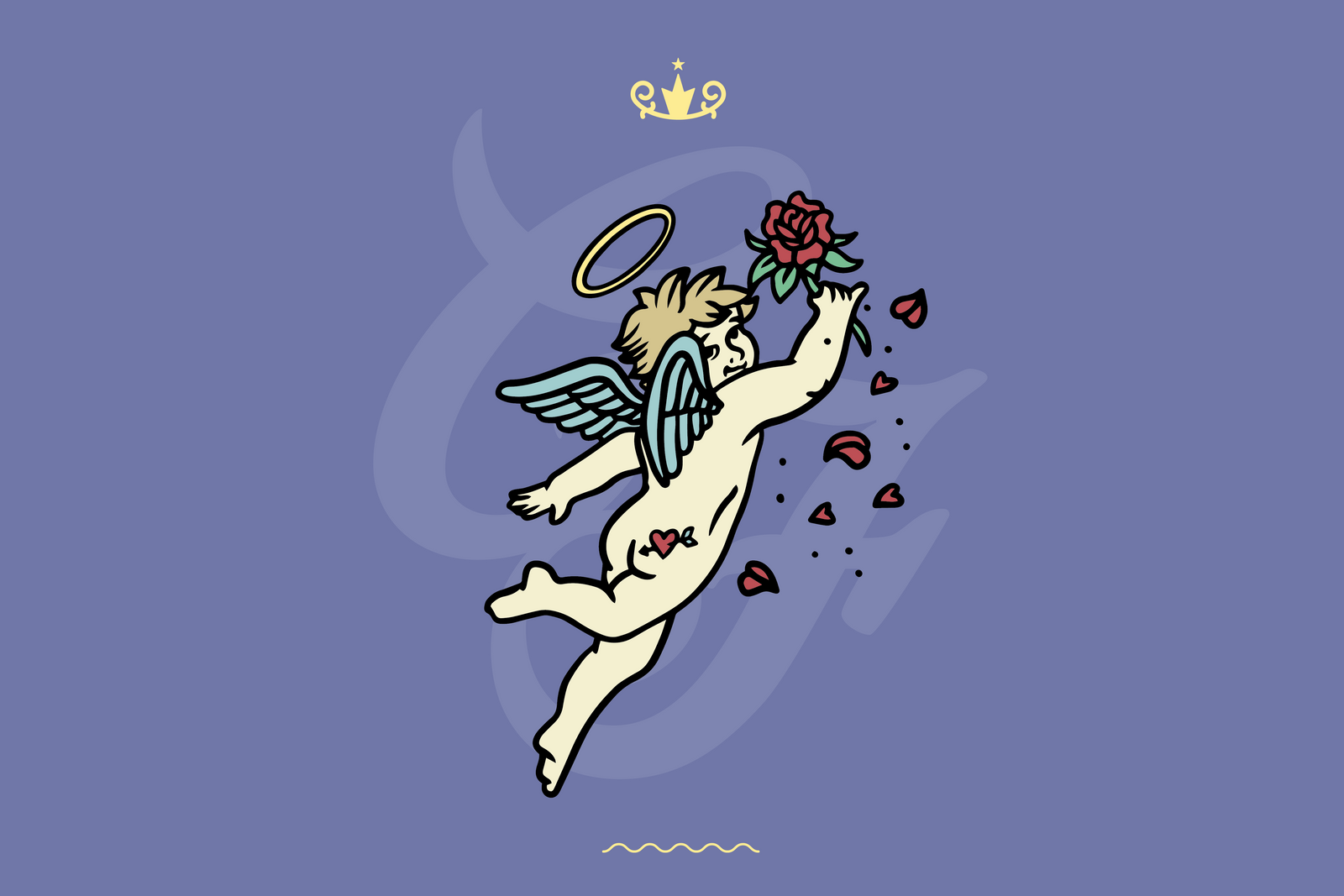CUPID

Every year as February begins and the Valentine’s Day propaganda starts flowing, we begin to see depictions of a little guy whose job is love. And no, I’m not talking about Mike Myers’s character in the Love Guru—I’m talking about Cupid.
Our winged and diapered cherubic deity has origins in Roman mythology (and Greek mythology where his name was Eros). Cupid derives from the Latin word “cupere” meaning to desire. As the legend goes, he was the son of Venus, the Goddess of Love. While we often might picture Cupid shooting an arrow into some buffoon’s heart to make him fall head over heels, his powers are actually a bit more dichotomous and even sinister. His barbed golden-tipped arrow has the power to make someone fall in love. However, his blunted silver-tipped arrow makes someone fall out of love, or even turn to hatred. Nobody was more familiar with this lil’ gotcha than Apollo.
According to myth, Apollo was being an absolute dick to Cupid and saying that he wasn’t a true warrior with his wimpy little arrows. However, Cupid countered that actually, breaking someone’s heart was far worse than any physical pain some agro bros could inflict in battle. To prove it, Cupid shot Apollo with his golden-tipped arrow just as the beautiful Daphne passed by (cue whistles and va-va-voom sound effects). Then, he shot Daphne with his silver-tipped arrow. (See above paragraph if you don’t remember what each of those do from five seconds ago.)
Apollo became infatuated with Daphne who wanted nothing to do with the Sun God. He was probably really into showing her his golden chariot and, I assume, talking about crypto. She got so annoyed that she went to her dad and pleaded for any assistance in avoiding this creep altogether. So, her dad did what any loving parent would and turned her into a laurel tree. Maybe a little extreme, but hey, it was the 60s—literally, circa the year 60 during the Roman Empire. Apollo, however, still didn’t take the hint and vowed to love the tree forever and to adorn himself with laurel leaves upon every victory. And to this day, laurels are a sign of Olympians and John Belushi alike. You could go so far as to say we wouldn’t have the phrase, “Don’t rest on your laurels” without Cupid—and I know you say that at least once a day.
For centuries, Cupid was a real hot, badass, emo guy in this way. But as time went on, societies gave him the Benjamin Button treatment. Romans became infatuated with the depiction of a child cupid attending to his mother’s wishes. During the Renaissance when seemingly everything was taboo, Cupid de-aged again in a variety of master works like Caravaggio’s Cupid. So, by the time the 1800s rolled around and Valentine’s Day was already becoming popular, it’s no surprise that Cupid started to become its literal poster child (er…baby). Hallmark historian Samantha Bradbeer says that greeting cards from this era didn’t invent the association, they were just following the trend imbedded in the zeitgeist.
In the 1850s, Congress was trying to help America, for a change, and voted to decrease postage rates in an attempt to avoid privatization. Can you imagine? With sending letters and postcards now attainable to the everyday lovesick schmo, Hallmark began manufacturing Valentine’s Day cards. Aside from Christmas, Valentine’s Day remains Hallmark’s biggest holiday. And Cupid forever remains in our hearts.
See you out there.































